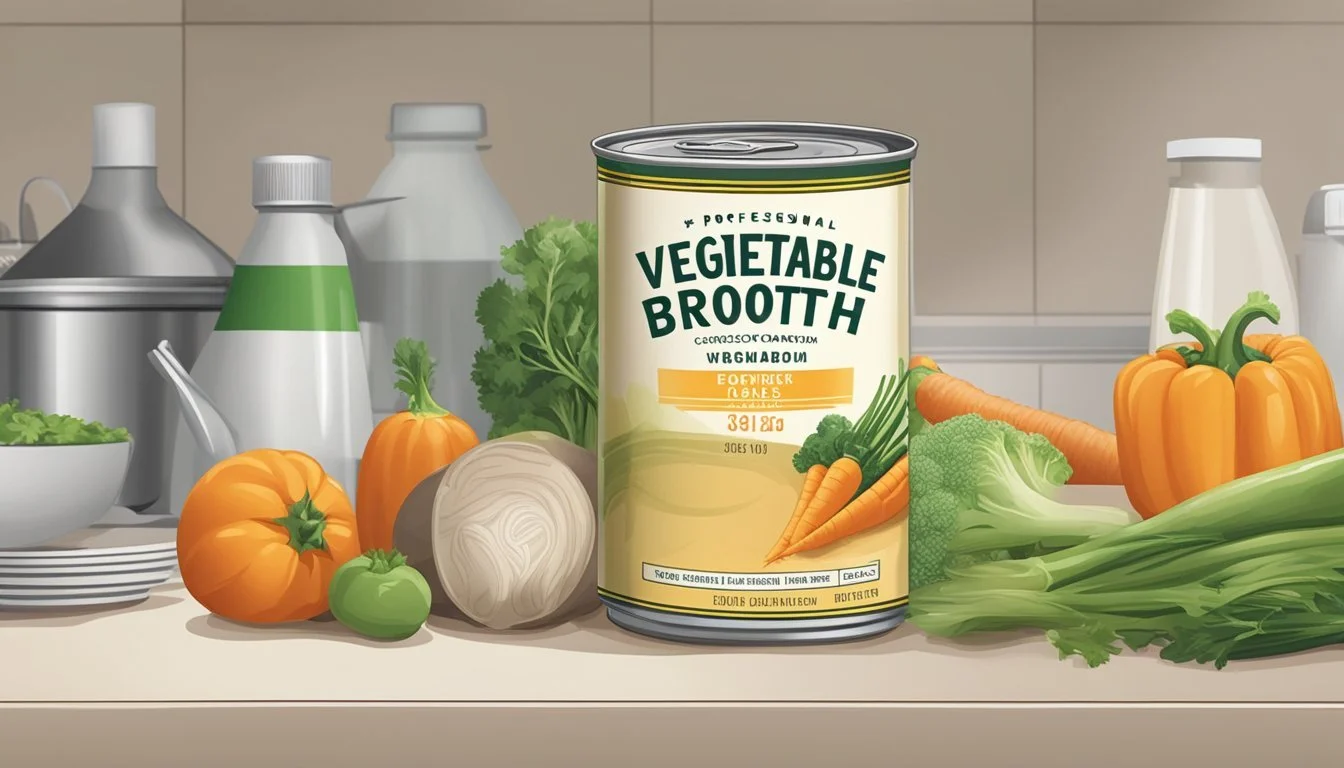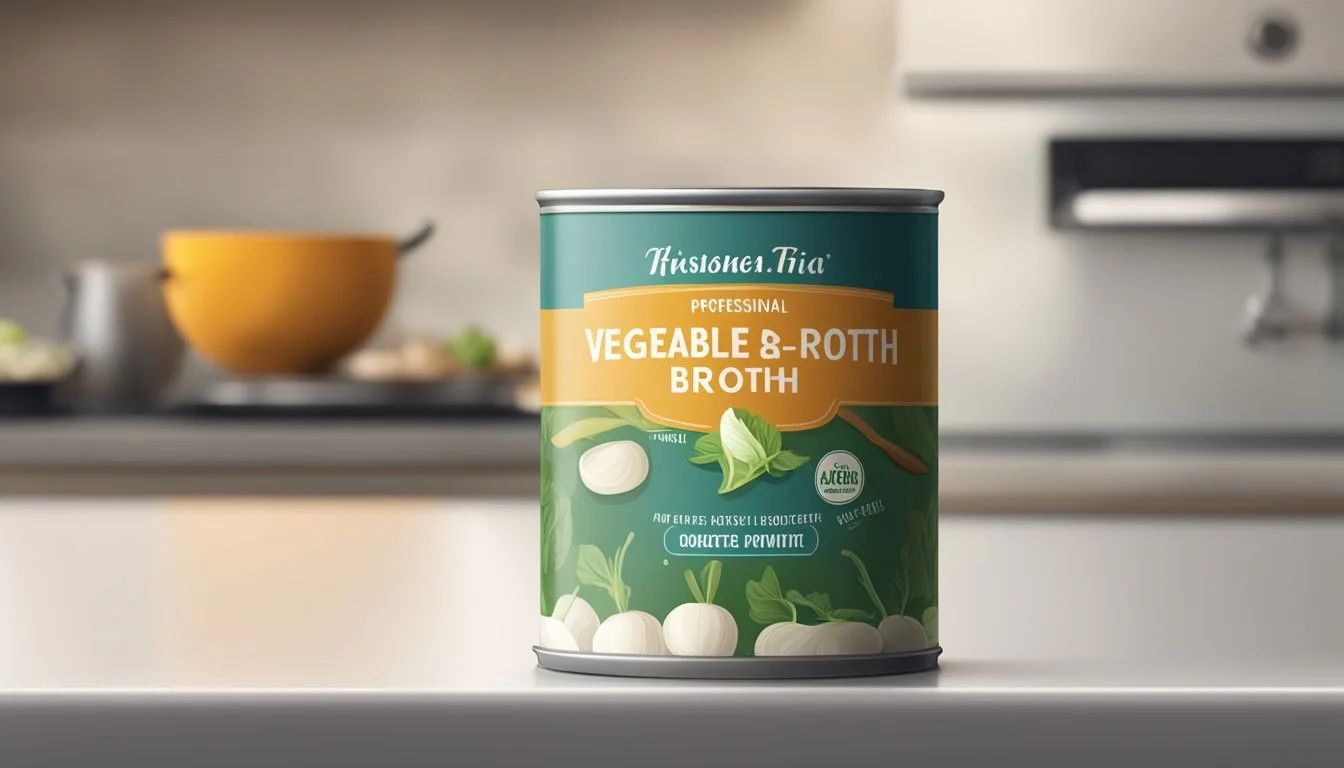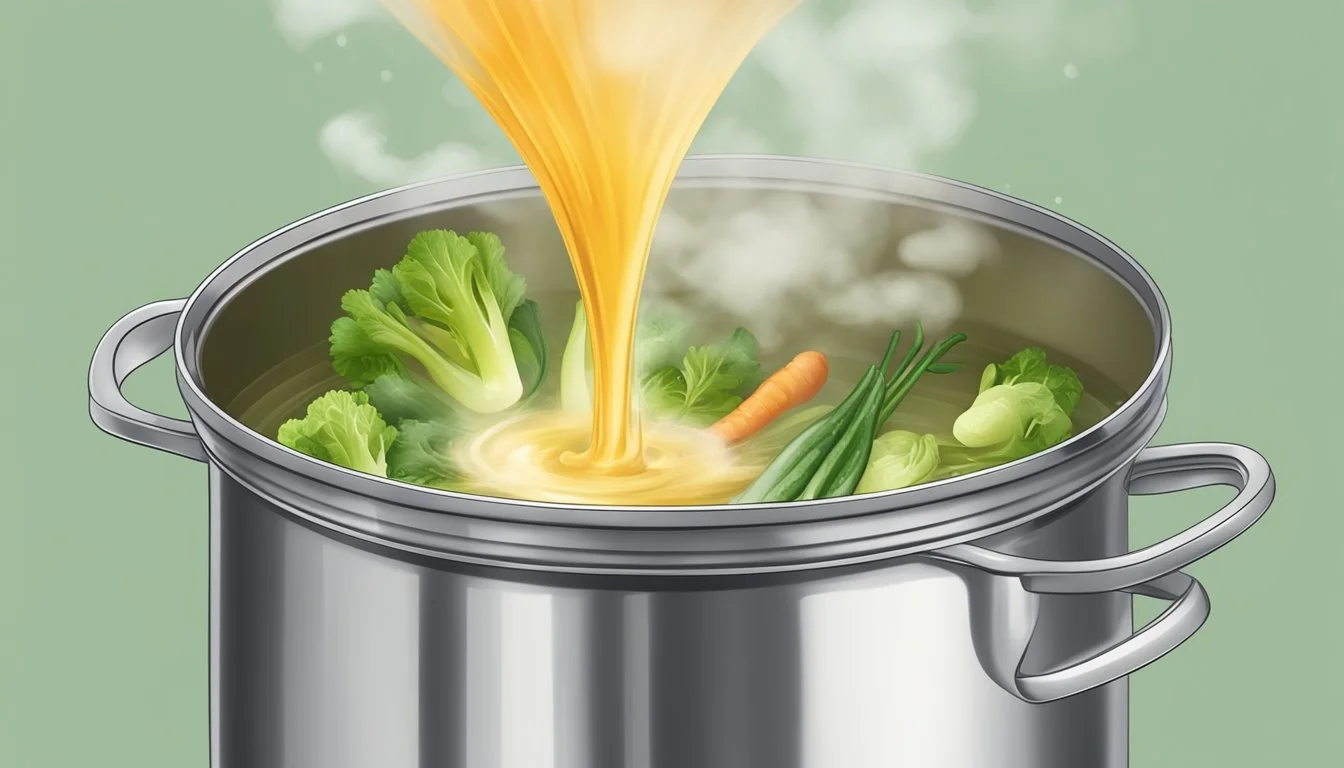How Many Ounces in a Can of Vegetable Broth
Understanding Sizes and Servings
Canned vegetable broth is a staple in many kitchens, offering a convenient base for soups, stews, and other culinary ventures. Understanding the amount of broth in these cans is fundamental for meal planning and recipe execution. Typically, the standard can size for vegetable broth is 14.5 ounces, which is approximately 1.8 cups. However, it is not uncommon to find this essential cooking ingredient in various other sizes to accommodate different needs, including 32-ounce and 48-ounce containers.
Additionally, conversions between ounces and cups are useful for accurate ingredient measurements, especially when adapting recipes or swapping fresh ingredients for canned goods. It is valuable for home cooks and professional chefs alike to know the volume of broth they are working with to ensure consistency in flavor and texture of the finished dish. While standard sizes are most common, it is always advisable to confirm the ounces listed on the can's label to guarantee precise measurements in cooking.
Understanding Ounces and Can Sizes
In determining the right amount of vegetable broth for a recipe, it is essential for a cook to have a clear understanding of can sizes and their volume in ounces.
Standard Can Sizes
Standard can sizes are often expressed in a number code. The first number corresponds to the can's diameter in whole inches and sixteenths of an inch, while the second sequence represents the height in the same units. For example:
A can marked as 303 x 406 indicates it is 3 3/16 inches in diameter and 4 6/16 inches (or 4 3/8 inches) tall.
Another size, 603 x 700, translates to a can that is 6 3/16 inches diameter by 7 inches tall.
These numeric codes are crucial because they uniformly dictate the can's capacity, which impacts the weight and volume of the broth contained.
Ounces to Volume Conversion
When it comes to vegetable broth, the weight of the liquid is commonly referred to in ounces. This measurement corresponds to volume as follows:
Ounces Approximate Volume Conversion 14.5 1.81 cups (about 1 3/4 cups) 32 4 cups 48 6 cups
Vegetable broth cans often come in sizes like 14.5 ounces, which would be slightly more than 1 3/4 cups of broth. This is a common size for a single-use recipe application. Other broth can sizes such as 32 ounces and 48 ounces cater to larger meal preparations or family-sized recipes. It is important for the consumer to match the can size to their recipe requirements.
Overview of Vegetable Broth
Vegetable broth, a flavorful liquid made by simmering vegetables and herbs, serves as the foundation for numerous soups and recipes. It offers a rich source of vitamins and minerals while providing a depth of flavor to dishes.
Benefits of Vegetable Broth
Vegetable broth is laden with nutrients, deriving a healthy dose of vitamins and minerals from its vegetable content. It's typically lower in calories and fat compared to meat-based broths, making it a favored choice for those monitoring their dietary intake. It is a versatile ingredient that can easily boost the nutritional value of meals without adding significant calories.
Common Uses of Vegetable Broth
The uses for vegetable broth are plentiful in the culinary world. It acts as a base for various soups, stews, and sauces, imparting a subtle yet complex flavor profile. Additionally, vegetable broth can replace water when cooking grains like rice or quinoa, offering an infusion of flavor that elevates the overall taste of a dish. It is also commonly used for sautéing vegetables, thereby reducing the need for oils and fats.
Ingredients in Vegetable Broth
Vegetable broth is crafted with a variety of vegetables and herbs that contribute to its rich flavor and nutritional value. Here we outline the common components and optional add-ins that can take the essence of the broth to new culinary heights.
Typical Vegetables and Herbs
Vegetables: The foundational ingredients of vegetable broth include diced carrots, chopped celery, quartered onions, and smashed garlic cloves. These vegetables provide a robust base flavor. Tomatoes and sliced leeks are also frequently added for their depth of flavor and subtle sweetness.
Herbs: Fresh herbs such as parsley and thyme are often included for their aromatic qualities. Seasoning essentials like bay leaves bring a distinct fragrance and slight bitterness that balances the vegetable sweetness.
Optional Add-ins for Enhanced Flavor
Infusing additional flavors into vegetable broth can transform it from simple to sensational. Here are some popular add-ins:
Dried mushrooms: Introduce an earthy undertone.
Hardy herbs: Such as rosemary or oregano to layer complexity.
Peppercorns: For a hint of heat and sharpness.
A small scoop of tomato paste: Can enrich the broth with umami.
Incorporating these ingredients allows one to tailor the broth to personal tastes or specific dishes.
Making Homemade Vegetable Broth
Creating a homemade vegetable broth is a flavorful and versatile kitchen skill. It involves careful preparation of vegetables, a gentle cooking process to extract the rich flavors, and proper storage methods to preserve the freshness.
Preparation of Vegetables
One starts by gathering vegetable scraps or fresh vegetables. These typically include celery, carrots, onions, and sometimes, tomatoes, garlic, and mushrooms. All vegetables should be cleaned and chopped coarsely. If one opts for olive oil, a stock pot can be used to sauté these vegetables to enhance the flavor before adding water.
Cooking Process
Once the vegetables are prepped, they are covered with cold water in the stock pot. The mixture is then brought to a gentle simmer. This slow cooking method typically lasts for 45 to 60 minutes, allowing the flavors to meld together and create a rich broth. Throughout this process, it's crucial to avoid boiling as this can make the broth cloudy and overly strong in flavor.
Storing Homemade Broth
After cooking, the broth is strained to remove solids. For immediate use, one can keep the broth in the refrigerator where it will stay fresh for several days. For longer storage, the broth can be frozen. It's recommended to use freezer-safe containers or jars leaving some space at the top as the liquid expands when frozen. To preserve homemade broth through canning, one must use a pressure canner to ensure safety. Lids and rings are secured finger tight before the canning process, which will allow for shelf-stable storage.
Using Vegetable Broth in Cooking
Vegetable broth is a versatile ingredient that infuses dishes with depth and flavor. It is often used as a liquid base in many recipes, ranging from soups and stews to risottos and rice dishes, offering a rich taste profile that complements both meat-based and vegetarian or vegan meals.
Incorporating Broth into Recipes
When cooking with vegetable broth, one typically uses it as a replacement for water to enhance the flavors of the dish. It's particularly effective in:
Rice dishes: Adding vegetable broth to rice imbues it with additional flavors. For example, in a simple dish of rice, replacing water with vegetable broth can transform it from a plain side to a savory part of the main course.
Risottos: The gradual addition of warm vegetable broth to arborio rice is essential in creating the creamy texture of a classic risotto.
Herb enhancement: Vegetable broth can act as a medium to dissolve and distribute the flavors of herbs throughout a dish, ensuring every bite is seasoned perfectly.
Vegetable Broth as a Base for Soups and Stews
In soups and stews, the role of vegetable broth is even more prominent:
Soups: It serves both as a base and a carrier for the flavors of the other ingredients. The combination of a rich vegetable broth with herbs, such as parsley or thyme, and aromatic vegetables creates a foundation upon which other ingredients like meat or legumes can stand out.
Stews: Vegetable broth not only provides moisture but also a complex flavor base that can be built upon with the addition of robust ingredients and spices.
Vegetable broth's adaptability allows it to be utilized in an array of recipes, offering a straightforward way to elevate the taste quality of both simple and sophisticated dishes.
Health and Dietary Considerations
Vegetable broth is a flavorful and versatile component in many diets, with particular health benefits and suitability for vegetarian and vegan diets due to its plant-based ingredients.
Benefits of Vegetable Broth in a Diet
Vegetable broth is low in calories, typically containing around 11 calories per cup, and free from saturated fats and cholesterol. This makes it an excellent choice for individuals watching their caloric intake. Furthermore, the broth can be an essential source of soluble and insoluble fiber, depending on the preparation. Fiber is known for its ability to aid digestion, lower cholesterol, and help manage diabetes.
Incorporating vegetable broth into a diet can also contribute to hydration due to its high water content, while the variety of vegetables used can offer a range of vitamins and minerals. A diet rich in vegetables has been associated with a reduced risk of several chronic diseases, including heart disease and certain cancers.
Vegetable Broth for Vegetarian and Vegan Diets
For those adhering to vegetarian and vegan diets, vegetable broth is an important staple, as it is made entirely from plant-based ingredients. Vegetable broth can serve as a nutrient-rich base for soups, stews, and other dishes—committing to the exclusion of animal products.
The broth provides a depth of flavor and nutrition without relying on meat or bone broths, which are unsuitable for vegetarian and vegan diets. It allows for the addition of diverse fresh vegetables, often including staples like carrots, celery, onions, and sometimes more unique ones like dried mushrooms or parsley, contributing to a varied and nutritious plant-based diet.
Food Preservation Techniques
When preserving vegetable broth, one can choose between freezing and canning methods. These techniques ensure the broth maintains its quality and is safe for future use.
Freezing Vegetable Broth
Freezing vegetable broth is a simple way to prolong its shelf life while maintaining its flavor and nutritional value. An individual should pour the cooled broth into freezer-safe containers or freezer bags, leaving about an inch of headspace to allow for expansion. It's advised to label each container with the date of freezing. Vegetable broth can be safely stored in the freezer for 4-6 months. When one wants to use the broth, they simply thaw it in the fridge before warming it up.
Canning Vegetable Broth
Pressure canning is the recommended method for canning vegetable broth as it ensures the safety and longevity of this low-acid food. The broth should be hot-packed into clean jars, leaving 1-inch of headspace at the top. The canner gauge should be closely monitored to reach the correct pressure based on the altitude of one's location. For altitudes up to 1,000 feet, pint jars should be processed at 10 pounds pressure for 30 minutes, and quart jars for 35 minutes. Time adjustments must be made for different altitudes to ensure safety.
Comparing Broths and Stocks
Understanding the nuances between broths and stocks is crucial for culinary applications, particularly in terms of flavor and suitability for different recipes.
Difference Between Broth and Stock
Broth is typically made by simmering meat with bones, which may or may not include seasoning, to extract flavor. Stock, on the other hand, focuses primarily on bones, often roasted first to intensify the flavor, and tends to have a fuller mouthfeel due to the collagen extracted from the bones during the prolonged cooking process. The main differentiators are:
Flavor: Broth often has a lighter, more pronounced meat or vegetable flavor, while stock offers a deeper, richer taste.
Texture: Stock has a more gelatinous consistency compared to the more liquid texture of broth.
Types of Broth and Stock:
Vegetable Broth: Mild and versatile, made from simmering vegetables.
Chicken Stock: Robust and hearty, usually made from chicken bones.
Beef Broth: Rich and flavorful, typically created from beef meat and bones.
Choosing Broth or Stock for Recipes
When selecting broth or stock for recipes, consider the desired flavor intensity and texture of the final dish. Broth is best suited for soups and can be consumed on its own, whereas stock serves as a base in sauces and gravies, where it can lend body and a nuanced flavor. For example:
Use vegetable stock to add depth to vegan or vegetarian dishes.
Opt for chicken stock in recipes where a poultry flavor complements the dish, such as risotto.
Beef broth brings a meaty taste to stews and simmered dishes.
When substituting one for the other, remember that stocks might need additional seasoning to match the flavor profile provided by a broth.
Advanced Topics in Broth Making
When diving into advanced broth making techniques, the focus is on creating complex layers of flavor that can elevate any dish. Two key areas are enhancing the elusive umami taste and incorporating diverse international seasonings.
Creating Umami Flavor
Umami, the so-called fifth taste, is a rich and savory flavor component that deepens the overall taste experience. Chefs often develop umami in vegetable broth by adding ingredients rich in glutamates, which are compounds that signal the umami sensation on the palate. Dried mushrooms are a staple for this purpose. When simmered in broth, mushrooms release their natural glutamates, enhancing the broth's umami profile substantially.
Another common method is incorporating tomato paste. A tablespoon or two can add both color and depth to the foundational taste. Chefs may also introduce soy sauce or miso paste during the simmering process for an additional umami boost.
Key Ingredients for Umami in Broth:
Dried mushrooms
Tomato paste
Soy sauce or miso
Experimenting with International Flavors
Exploring international flavors allows chefs to tailor vegetable broth to complement a variety of global cuisines. One might start with a base of good quality olive oil to sweat aromatic vegetables. This not only contributes a layer of flavor but also introduces a subtle richness typical in Mediterranean dishes.
A multitude of seasonings can transport a simple broth across continents. For instance, the inclusion of lemongrass and ginger can align the broth with Asian culinary traditions. Alternatively, a mix of cumin, coriander, and a dash of sea salt might be added to achieve a Middle Eastern or North African undertone.
Seasoning Combinations for International Flavors:
Mediterranean: Olive oil, garlic, basil
Asian: Lemongrass, ginger, star anise
Middle Eastern: Cumin, coriander, mint
Chefs can experiment with various seasonings in small batches to determine the optimal blend and concentration that best suits the intended culinary application.











